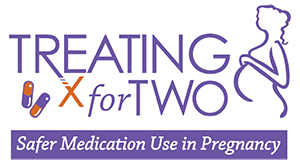Key Findings: Use of Pain Medicine During Early Pregnancy May Be Related To Birth Defects

A study from the Centers for Disease Control and Prevention (CDC) found that women who took NSAIDs and opioid pain medicines during early pregnancy were more likely to have babies affected with certain birth defects compared with women who took acetaminophen. However, more research is needed to understand whether the risk of birth defects is related to the medicine or to the conditions that they are being used to treat. More research is also needed to understand which medicines are the safest treatment options for pain management during various stages of pregnancy.
Read the scientific summary (abstract) of the research.
Main Findings
- In this study, slightly more than half of women reported taking pain medicine during early pregnancy.
- Taking both NSAIDs and opioids during early pregnancy may be related to these birth defects:
- Researchers are not sure whether the risk of birth defects is related to the medicine or to the conditions that these medicines are being used to treat.
- Pain management in pregnancy is important for the health of both the mother and developing baby. Women should talk to their healthcare provider about available options before stopping any current medicine or starting new medicines.
About This Study
- For this study, researchers looked at links between the use of NSAIDs and opioids during early pregnancy and the occurrence of certain birth defects.
- Researchers looked at NSAIDS and opioids in general, as well as specific types of NSAIDs (ibuprofen, aspirin, and naproxen) and opioids (hydrocodone and codeine) and their possible links with certain birth defects.
- The study used data from the National Birth Defects Prevention Study (NBDPS), one of the largest U.S. studies aimed at understanding factors that increase the risk for major birth defects.
About Birth Defects
Birth defects are common, costly, and critical conditions that affect 1 in every 33 babies born in the United States each year. Birth defects are structural changes present at birth that can affect almost any part or parts of the body (such as the heart, brain, face, arms, and legs). They may affect how the body looks, works, or both.
Our Work

CDC’s National Center on Birth Defects and Developmental Disabilities (NCBDDD) is working to improve the health of women and babies through its Treating for Two: Safer Medication Use in Pregnancy initiative. Through Treating for Two, CDC is working with its partners, other federal agencies, and the public to understand trends in medication use among pregnant women and women of reproductive age and to provide women and healthcare providers with information about the safety or risk of using specific medications during pregnancy. This information will allow women and their doctors to make informed decisions about treating health conditions during pregnancy.
For more information, visit www.cdc.gov/treatingfortwo.
About Pain Medicine
- Opioids are prescription medicines that are commonly prescribed by healthcare providers to treat moderate to severe pain. Opioids are also found in some prescription cough medicines.
- Opioids include medicines like codeine, oxycodone, hydrocodone, or morphine.
- Non-steroidal anti-inflammatory drugs (NSAIDs) are prescription and non-prescription medicines that are commonly used to treat pain and fever.
- NSAIDs include medicines like ibuprofen and naproxen.
- Acetaminophen is a prescription and non-prescription medicine that is commonly used to treat pain and fever. Acetaminophen is also found in many cold medicines.
- Acetaminophen is a generic medicine that is sold under brand names, including Tylenol© and Panadol©.
More Information
Key Findings Reference
Interrante, JD, Ailes, EC, Lind, JN, Anderka, M, Feldkamp, ML, Werler, MM, Taylor, LG, Trinidad, J, Gilboa, SM, Broussard, CS, and the National Birth Defects Prevention Study. Risk comparison for prenatal use of analgesics and selected birth defects, National Birth Defects Prevention Study 1997-2011. Annals of Epidemiology. 2017.
- Page last reviewed: September 26, 2017
- Page last updated: September 26, 2017
- Content source:


 ShareCompartir
ShareCompartir